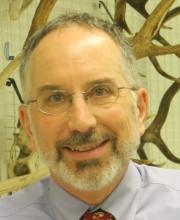James Hanken
Professor of Biology, Curator of Herpetology in the Museum of Comparative Zoology,
Alexander Agassiz Professor of Zoology in the Museum of Comparative Zoology
(Not Accepting Graduate Students for 2024-2025)
Alexander Agassiz Professor of Zoology in the Museum of Comparative Zoology
(Not Accepting Graduate Students for 2024-2025)

Faculty Support: Bridget Power
I study the evolution of morphology, developmental biology, and systematics. Most work by my group focuses on amphibians but otherwise addresses a wide range of topics, taxa, and methodologies. The latter range from laboratory-based molecular analyses to extensive field inventories. Current subjects include the evolution of craniofacial patterning in vertebrates; the developmental basis of life-history evolution; systematics, taxonomy and evolution of South American frogs and neotropical salamanders; and biodiversity informatics, including digital technologies.
Contact Information
The Museum of Comparative Zoology
26 Oxford Street
Cambridge, MA 02138
26 Oxford Street
Cambridge, MA 02138
